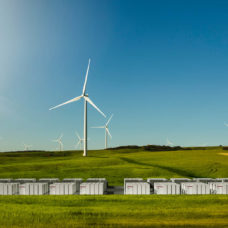The COVID-19 pandemic forced many businesses to close. And this led to an unprecedented commerce disruption in several sectors, including the hospitality industry.
Back in March, restaurants, and bars in Australia had to shut down to curb the spread of diseases. As a result, breweries in the countries ended up with massive inventories of unsold, stale beer.
According to reports, one of Australia’s largest breweries, Lion Beer Australia, emptied as much as 4.5 million liters of unwanted beer.
Now, the breweries are adapting to ensure that their resource doesn’t go to waste. They found a purpose for expired ales and lager in the state of South Australia — powering a water treatment plant.
In a statement, senior manager of production and treatment at SA Water, Lisa Hannant said:
“This is just one example of how the industry has remained resilient and adapted to ensure their resources aren’t wasted while enabling an outcome for the environment.”
Here’s how the Glenelg Wastewater Treatment Plant converts unsold beer to renewable energy to power its water treatment process.
Converting Unsold Stale Beer into Electricity to Power a Water Treatment Plant
According to Hannant, Glenelg Wastewater Treatment Plant had always been able to generate its energy from biogas.
The treatment plant mixes organic industrial waste with sewage sludge and heats the mixture in an oxygen-free digester tank to produce biogas. In turn, the biogas can be converted into electricity to power the facility.
In fact, the process addresses roughly 80 percent of the plant’s energy needs.
However, the addition of ales and lagers during the lockdown have boosted this ability to new heights. The plant was able to generate up to 654-megawatt hours of energy in a single month.
Hannant noted:
“By adding around 150,000 liters of expired beer per week, we generated a record 355,200 cubic meters of biogas in May and another 320,000 cubic meters in June, which is enough to power 1,200 houses.”
As it turns out, beer worked well for the plant’s digesters — similar to how the industrial waste and sewage sludge works.
Thanks to its high calorific content and methane potential, beer releases lots of heat during combustion. And this makes it “perfect” for the anaerobic digestion that’s necessary to generate biogas.



















Comments (0)
Most Recent